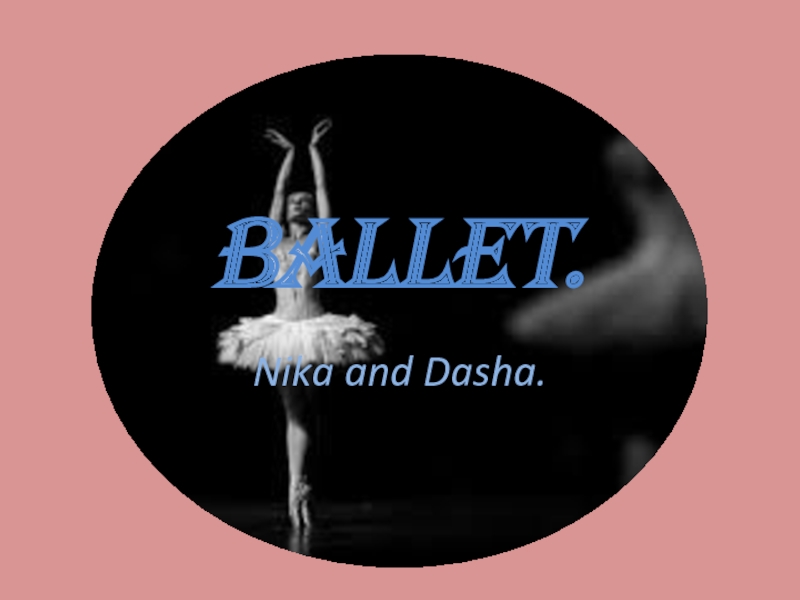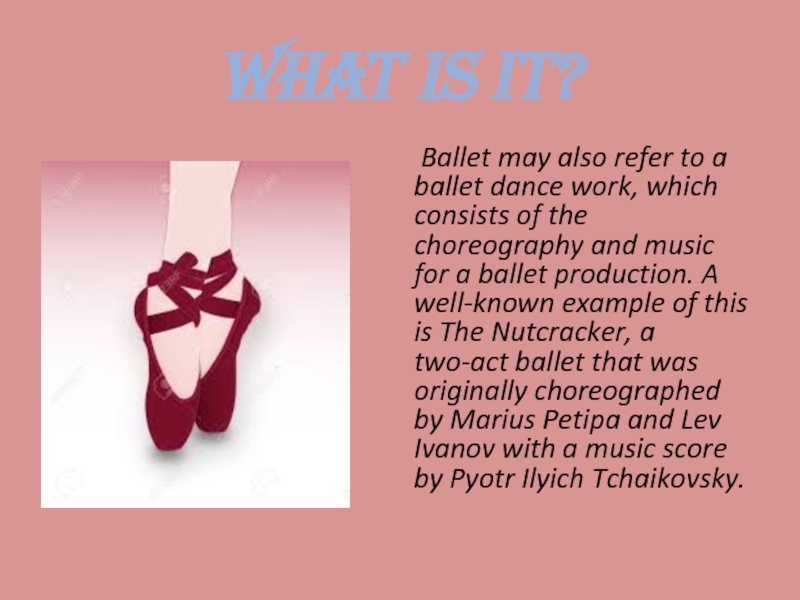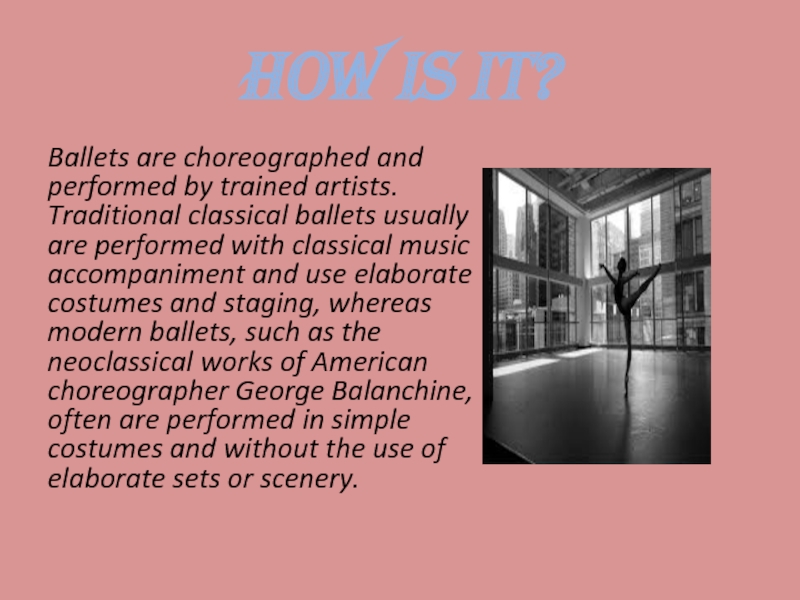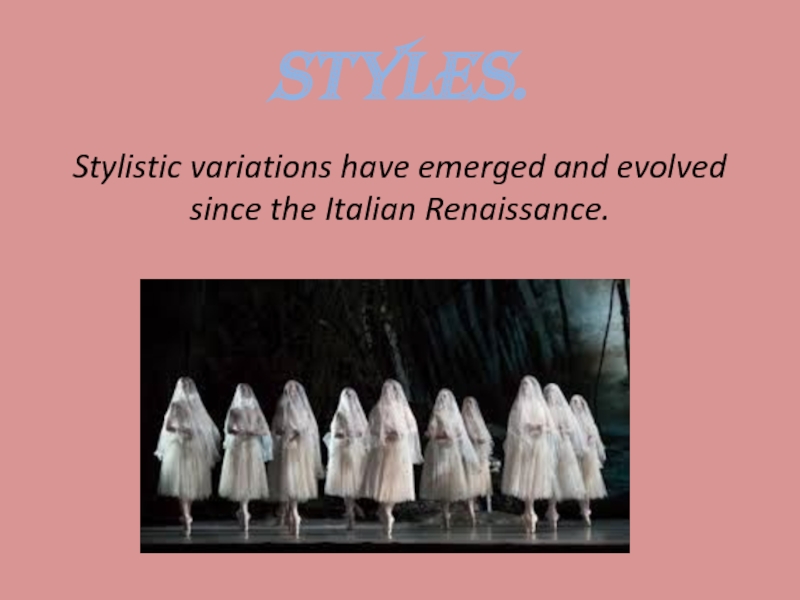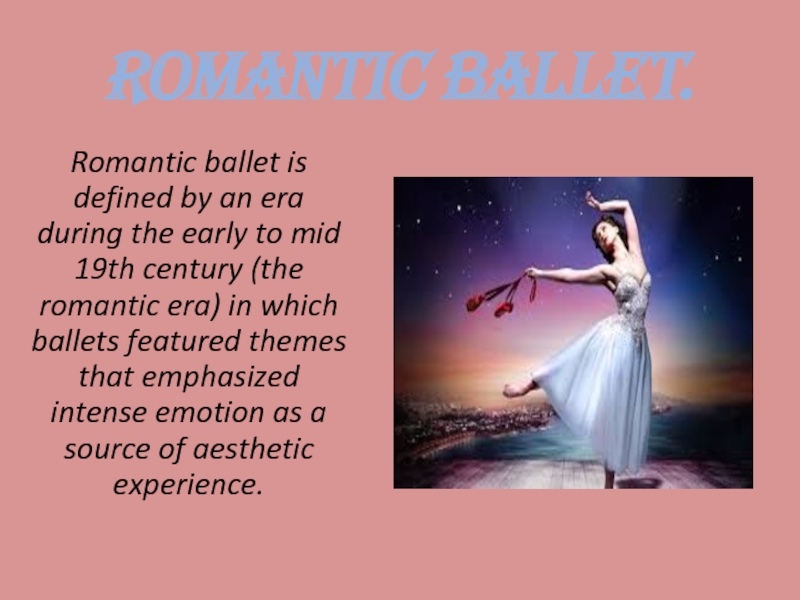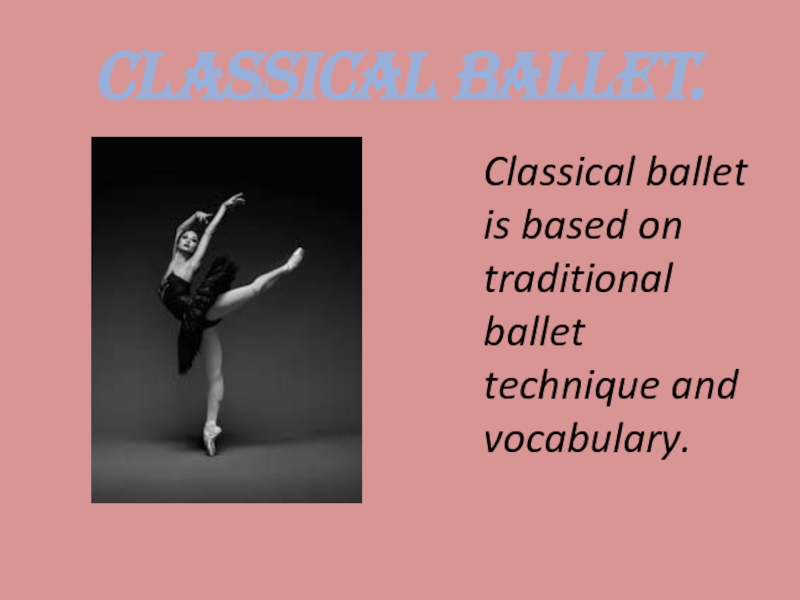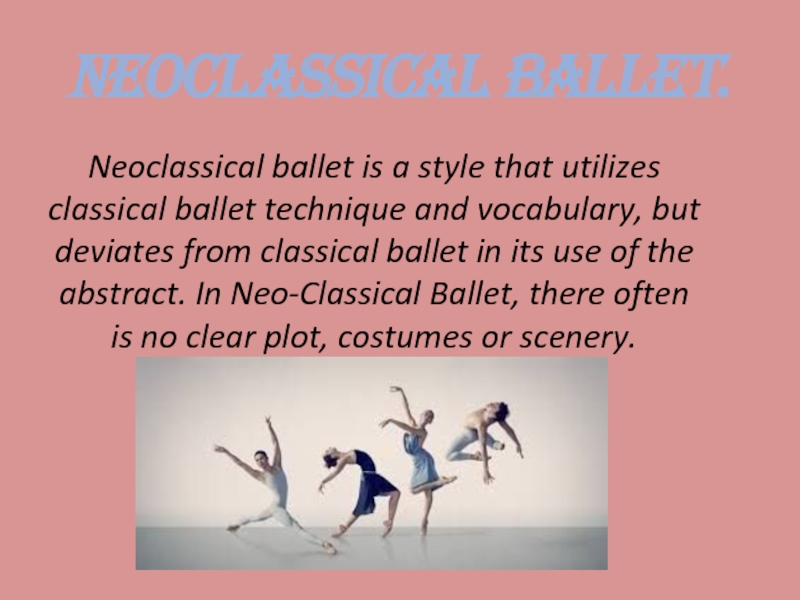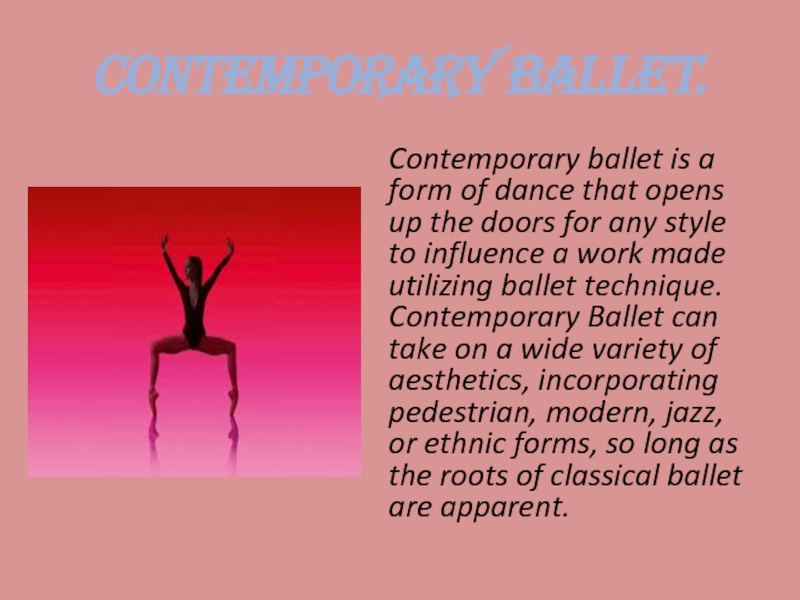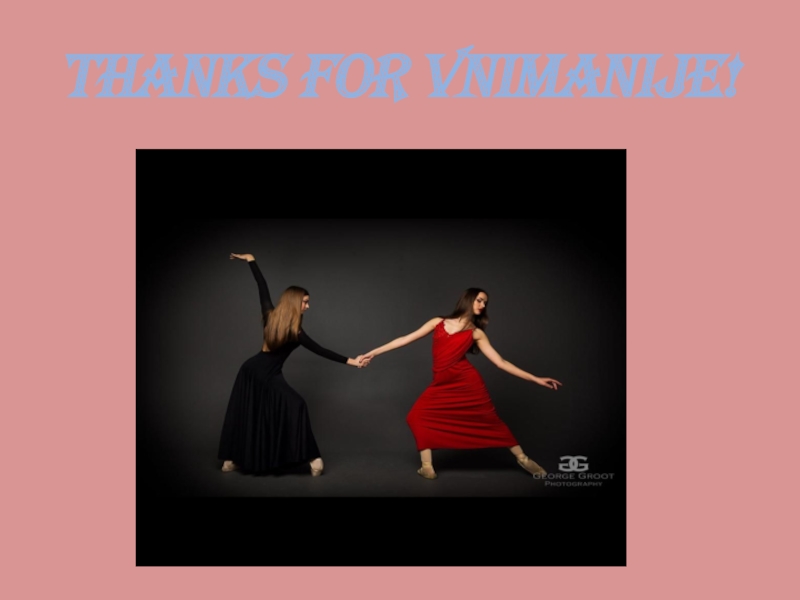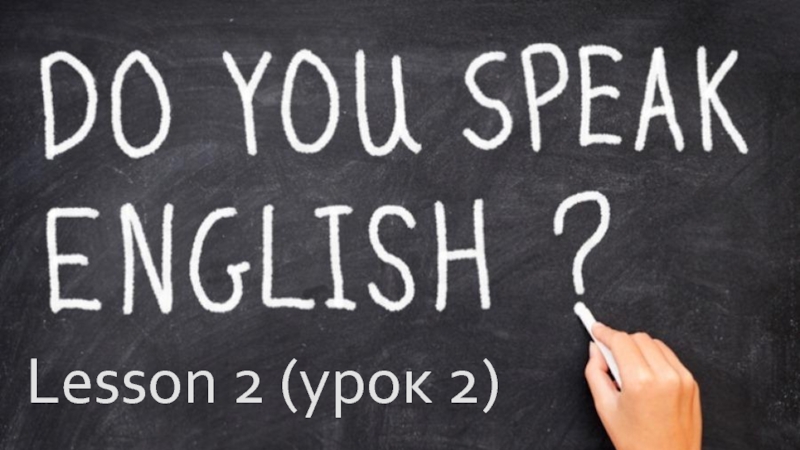- Главная
- Разное
- Дизайн
- Бизнес и предпринимательство
- Аналитика
- Образование
- Развлечения
- Красота и здоровье
- Финансы
- Государство
- Путешествия
- Спорт
- Недвижимость
- Армия
- Графика
- Культурология
- Еда и кулинария
- Лингвистика
- Английский язык
- Астрономия
- Алгебра
- Биология
- География
- Детские презентации
- Информатика
- История
- Литература
- Маркетинг
- Математика
- Медицина
- Менеджмент
- Музыка
- МХК
- Немецкий язык
- ОБЖ
- Обществознание
- Окружающий мир
- Педагогика
- Русский язык
- Технология
- Физика
- Философия
- Химия
- Шаблоны, картинки для презентаций
- Экология
- Экономика
- Юриспруденция
Ballet. The start презентация
Содержание
- 1. Ballet. The start
- 2. The start. Ballet is a type of
- 3. What is it? Ballet may also
- 4. How is it? Ballets are choreographed and
- 5. Styles. Stylistic variations have emerged and evolved since the Italian Renaissance.
- 6. Romantic ballet. Romantic ballet is defined by
- 7. Classical ballet. Classical ballet is based on traditional ballet technique and vocabulary.
- 8. Neoclassical ballet. Neoclassical ballet is a style
- 9. Contemporary ballet. Contemporary ballet is a form
- 10. Thanks for vnimanije!
Слайд 2The start.
Ballet is a type of performance dance that originated in
the Italian Renaissance courts of the 15th century and later developed into a concert dance form in France and Russia. It has since become a widespread, highly technical form of dance with its own vocabulary based on French terminology.
Слайд 3What is it?
Ballet may also refer to a ballet dance
work, which consists of the choreography and music for a ballet production. A well-known example of this is The Nutcracker, a two-act ballet that was originally choreographed by Marius Petipa and Lev Ivanov with a music score by Pyotr Ilyich Tchaikovsky.
Слайд 4How is it?
Ballets are choreographed and performed by trained artists. Traditional
classical ballets usually are performed with classical music accompaniment and use elaborate costumes and staging, whereas modern ballets, such as the neoclassical works of American choreographer George Balanchine, often are performed in simple costumes and without the use of elaborate sets or scenery.
Слайд 6Romantic ballet.
Romantic ballet is defined by an era during the early
to mid 19th century (the romantic era) in which ballets featured themes that emphasized intense emotion as a source of aesthetic experience.
Слайд 8Neoclassical ballet.
Neoclassical ballet is a style that utilizes classical ballet technique
and vocabulary, but deviates from classical ballet in its use of the abstract. In Neo-Classical Ballet, there often is no clear plot, costumes or scenery.
Слайд 9Contemporary ballet.
Contemporary ballet is a form of dance that opens up
the doors for any style to influence a work made utilizing ballet technique. Contemporary Ballet can take on a wide variety of aesthetics, incorporating pedestrian, modern, jazz, or ethnic forms, so long as the roots of classical ballet are apparent.
